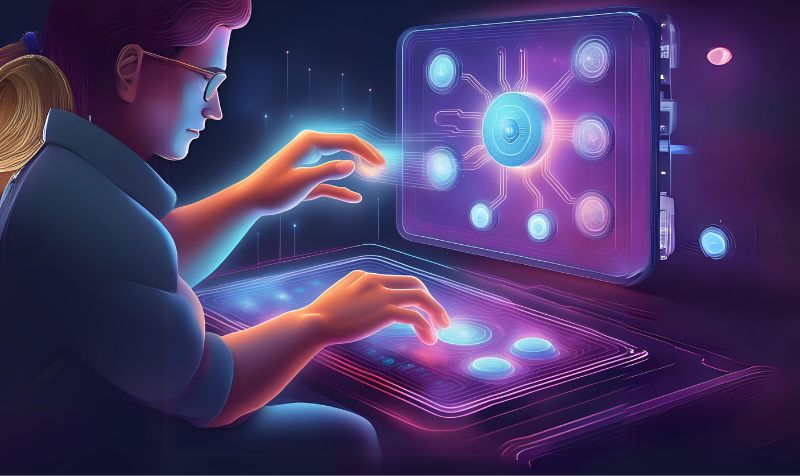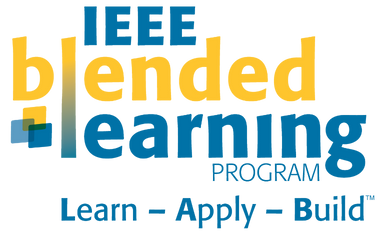

A report from Forrester predicts that by the end of 2025, every enterprise will adopt AI technology in some or the other capacity.
These days, Machine Learning (ML) – based solutions are prevalent across multiple industries to improve productivity, decision-making, product and service innovation, and more. All of us encounter ML in one way or another – be it mobile banking, relevant news pop-ups, social networks, riding app commute estimations, eCommerce chatbots—the list goes on and on.
With the global ML market projected to soar to $209.91 billion by 2029, mastering skills in this area isn’t just advantageous; it’s imperative.
Most tech companies also look for candidates with ML or adjacent skills in their portfolios. In this blog we’ll talk about the nuances of learning ML and how to go about it with two of the most powerful tools in the field: scikit-learn and TensorFlow.
What is Machine Learning

ML is a dynamic branch of AI that enables systems to learn from data, identify patterns, and make decisions with minimal human intervention. For instance
- ML algorithms in healthcare can predict patient diagnoses faster and more accurately than ever.
- In finance, ML can detect fraudulent transactions.
- The retail industry can use ML to personalize shopping experiences.
- In manufacturing, ML optimizes production lines and reduces waste.
- The logistics industry uses ML to streamline route planning and inventory management.
Why Learn Machine Learning?
For most techies today, having a good grip on ML has become important because it opens up a world of opportunities across multiple industries. Here are a few other reasons why learning ML can be a smart move for you:
1. Career Growth
The hype of ML is real. It is transforming every industry and companies are on the lookout for experts who possess relevant knowledge. So much so that:
A recent study states that there was a 90% increase in the number of ML professionals over the past year. Having said that, ML engineers are the most in deman right now. On the employment platform Foundit, ML engineers shared 23% of the total AI jobs.
After learning ML, here are some of the roles you can look up to:
- Data Scientist
- ML Engineer
- AI Research Scientist
- Natural Language Processing Engineer
- Computer Vision Engineer
- Algorithm Developer
- Robotics Engineer
- Quantitative Analyst
- AI Product Manager
- Data Analyst
2. Industry Versatility
The above data shows that ML has multiple use cases and is prominent across almost all industries. Here are some ML use cases for a few industries:
- Marketing and Sales: Enhance customer profiling and segmentation and optimize marketing strategies.
- Healthcare: Improve diagnostic accuracy and personalize treatment plans.
- Banking: Detect fraudulent transactions and automate risk management.
- Manufacturing: Predict equipment failures and streamline supply chain management.
- Retail: Personalize shopping experiences and manage inventory more effectively.
- Transportation: Optimize route planning and improve logistics efficiency.
3. Problem-Solving
ML equips you to solve critical and complex problems in your industry. These include:
- Enhancing supply chain efficiency
- Refining product recommendations
- Forecasting market trends
These skills streamline operations and elevate your problem-solving capabilities. It can help you become an indispensable part of any team.
4. Data-Driven Decisions
ML excels in turning large datasets into actionable insights quickly and accurately.
This capability is essential for informed decision-making. It can enable you to engage in precise strategic planning, targeted marketing, and enhanced customer experiences.
By mastering ML, you’ll be able to sift through data and uncover patterns that can effectively direct your strategies.
How to Learn Hands-On ML: Scikit-Learn and TensorFlow are Your Go-To
Scikit-Learnand TensorFlow are two of the most powerful frameworks for anyone looking to dive into the world of ML hands-on. These tools:
- Simplify complex algorithms and processes
- Offer robust, community-supported libraries
- Enable rapid model development
- Support a wide range of industry applications
- Allow scalable ML solutions
- Facilitate deep learning integration
- Promote experimental learning through direct application
Let’s get a detailed look into how these tools can help you enhance your learning:
1. Scikit-Learn
Scikit-Learn is an open-source library that provides efficient tools for data mining and data analysis. This library leverages other powerful scientific libraries, such as:
- NumPy for handling large arrays of data
- SciPy for advanced computing
- Matplotlib for data visualization
Core Features
- Broad Range of Algorithms: Includes support for various ML algorithms such as clustering, regression, and classification
- Data Preprocessing: Offers tools for feature extraction and normalization, which are essential for preparing data for ML models
- Model Selection and Evaluation: Provides several methods to assist in choosing the right model and assessing its performance effectively
- Pipeline Creation: Allows for the easy assembly of several steps that can be cross-validated together while setting different parameters.
Use Cases

Clustering: For grouping a set of objects in such a way that objects in the same group are more similar to each other than to those in other groups
Regression: For predicting a continuous-valued attribute associated with an object
Classification: For identifying which category an object belongs to
Why It is Ideal
Scikit-Learn is particularly suited for those beginning their ML journey due to its user-friendly interface, comprehensive documentation, and broad range of algorithms that can handle almost any standard ML task.
How It Helps
- Accessibility: Makes ML approachable with its simple and consistent interface across different algorithms
- Versatility: Suitable for almost any computational task that can be expressed as a transformation of a dataset
- Community Support: Benefits from a large community of users and contributors who provide support and contribute to continuous improvement
Integration Capability
Easily integrates with other Python-based scientific and data-analysis frameworks, enhancing its utility in complex, real-world scenarios.
2. TensorFlow
TensorFlow is an advanced open-source framework developed by Google. It is specifically tailored for deep learning, a subset of ML that involves neural networks.
Core Features
- Deep Learning Specialization: Primarily focused on training and running deep neural networks
- Versatility: Can be used across multiple CPUs or GPUs as well as on mobile devices, offering extensive flexibility in terms of where and how it can be run
- Scalability: Capable of handling large-scale ML projects, thanks to its ability to manage multiple tasks simultaneously across platforms
Use Cases
- Image Recognition: Automatically identify objects within larger images, used extensively in security and medical diagnostics
- Speech Recognition: Powers voice-activated assistants and transcription services
- Natural Language Processing: Enhances machine interaction with human language in chatbots and other AI-driven communication tools
Why It is Ideal
TensorFlow provides an extensive suite of tools and libraries that help researchers and developers develop and deploy ML applications more efficiently.
How It Helps
- Flexibility in Modeling and Experimentation: Offers an intuitive and flexible environment for building various types of neural networks.
- Strong Community and Support: Backed by extensive documentation and a large community of developers and researchers that contribute to a vast repository of shared knowledge and tools
- Continuous Development: Regular updates and improvements from Google ensure it stays at the cutting edge of deep learning technologies
Integration Capability
Seamlessly integrates with TensorFlow Extended (TFX) for deploying production-ready ML pipelines. It ensures that models can be systematically pushed from development to deployment.
Master Machine Learning through IEEE’s Blended Learning Program
IEEE’s Blended Learning Program in Machine Learning course is structured to equip participants with essential and advanced skills, transforming novices into adept practitioners ready to tackle modern challenges in various industries. Here’s a detailed look at what you will learn:
- ML Fundamentals: Understand key principles and algorithms foundational to AI.
- Python Programming: Use critical libraries like NumPy, Pandas, Scikit-learn, and Matplotlib for data handling and visualization.
- Advanced Neural Networks: Dive deep into ANN and CNN, learning how these models mimic human brain functions.
- Natural Language Processing: Apply ML to enhance communication tools, learning tokenization, stemming, and lemmatization.
- Image and Video Analysis: Master techniques for facial recognition and autonomous technologies using CNNs.
- Learning Types: Explore the distinction and applications of supervised and unsupervised learning.
- Anomaly Detection: Identify critical data patterns for security and fraud detection.
- Clustering Techniques: Employ methods like K-means and hierarchical clustering for data analysis.
In Conclusion
Visualization is a powerful tool in learning, providing clearer insights and understanding of complex concepts. IEEE’s Blended Learning Program (BLP) harnesses this by offering comprehensive resources that visually guide you through the complexities of ML.
Whether you’re a student, industry professional, or an academician, these courses are designed to enhance your skills and broaden your understanding of this dynamic field.
Discover the potential of ML and how it can transform your career and research—start by checking out our Machine Learning course. Don’t miss the opportunity to advance with IEEE BLP, a technology education and advancement leader.
FAQs
1. Can we use TensorFlow with scikit-learn?
Yes, TensorFlow can be used alongside scikit-learn in projects. Integrating TensorFlow’s deep learning capabilities with scikit-learn’s ML algorithms allows for more versatile and powerful model development.
2. Is scikit-learn compatible with TensorFlow?
Yes, Sklearn is compatible with TensorFlow. You can use Sklearn for model selection and preprocessing and TensorFlow for building and training more complex models, enabling a seamless workflow.
3. How do you use ML libraries like TensorFlow or scikit-learn in a project?
To use ML libraries like TensorFlow or scikit-learn in a project, start by importing the necessary modules, prepare your data, select an appropriate model, train the model on your data, evaluate its performance, and then deploy or further refine the model as needed.
4. Is scikit-learn used for ML?
Yes, scikit-learn is widely used for ML projects from basic to moderately complex. It offers robust tools for data preprocessing, model selection, and evaluation, making it an excellent choice for both beginners and experienced data scientists.
Post Tags : Hands-on machine learning Machine Learning
Share:
Social Media
Most Popular



What is Blockchain? A Definitive Guide

IoT Courses: From Free to Paid All Included
Subscribe To Our Weekly Newsletter
Categories
Filter by tags
-
what is cloud computing
-
Visualization in cloud computing
-
smart contracts
-
sensors
-
Regression in machine learning
-
Python programming
-
Python developer salary
-
Python
-
protocols
-
ML
-
Machine learning MCQ
-
Machine Learning
-
IoT with examples
-
IoT sensors
-
IoT device management
-
IoT
-
Internet of things
-
How to learn python
-
Healthcare
-
Hands-on machine learning
-
Examples of machine learning
-
Ethereum
-
Decentralized
-
cybersecurity
-
cryptocurrency
-
Cloud Computing
-
Cloud
-
Blockchain developer salary
-
Blockchain
-
Bitcoins
-
Bias in machine learning
-
Artificial Intelligence
-
Actuators in IoT
-
actuators
-
5g
Related Posts

Introduction to Cybersecurity
The cyberattack juggernaut increased impossibly in 2024 and left its victims more devastated than ever. Last year, companies were the victims of some nasty attacks.

What is IoT and How to Learn IoT: A Definitive Guide (2024)
Introduction The first question that comes to mind is, “What is the full form of IoT?” IoT stands for the Internet of Things, which refers

What is Blockchain? A Definitive Guide
Blockchain is quickly becoming a buzzword in various industries. This technology was popularised with the advent of Bitcoin in 2008. However, blockchain applications have gone

IoT Courses: From Free to Paid All Included
Introduction In this comprehensive guide on IoT courses, we will explore the field of the Internet of Things and its valuable skills for career advancement,
